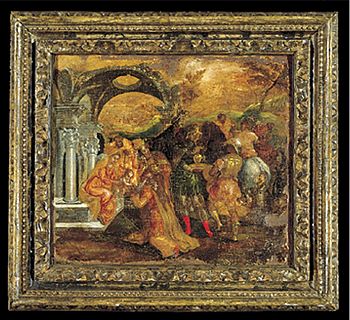A wonderfully pithy statement made me think hard recently:
“To the age, its art; to art, its freedom.”
This was a remark made by late 19th century art critic and author, Ludwig Hevesi,who lived in Vienna.
One only has to think of all the daring experiments in art last century, as the innovators – from Braque to Picasso, from Mondrian to Miro, from Motherwell to Rothko, from Sol Le Witt to Richard Serra, from Agnes Martin to Dan Flavin - stretched the world’s definitions of art.
Site-specific Installation, Dan Flavin, 1996 (Courtesy of Menil Collection)
They did so in tandem with the inventors of technology and so many mechanisms that revolutionized our world in daily living, in waging war, in making love and in how we treat our planet. Every tenet of traditional art-making was broken or so radically reinterpreted that little remained of the look of art familiar to the Western world since the early Renaissance or before.
As to the second part of Hevesi’s statement, “to art, its freedom” – that requires more thought.
Picasso’s Guernica immediately comes to mind, for instance. Picasso used his art to witness the atrocities visited by the Italian and German planes on the small Spanish town of Guernica in 1937 during the Spanish Civil War.
Guernica, Pablo Picasso, 1937 (Image courtesy of Museo Reina Sofia, Madrid)
In one sense, the statement means that art should be a political statement. However, I don’t think that all artists create work with politics in mind – cartoons, yes, as political commentary, and certainly films, if one includes them in the category of visual art.
Yet, willy-nilly, as artists, we are witnesses to our times; we create work that reflects our daily concerns and joys, our interests and the lives we lead within the context of our individual worlds. The people who then view the art created are participants in placing energy and time in that art, whether they “like” the art or not.
The art is, in essence, a symbol, a reflection, of that age or period in which they are living. The art signals what is important to the artist and thus can also alert the viewer to issues that are perhaps worth esteeming, preserving, celebrating – in other words, ensuring the freedom of those aspects of life that artists have highlighted.
Probably each of us has our own personal list of artworks that whisper to us of freedom. Freedom to enjoy viewing them, in the first place, without censure or fear; freedom to view them in a gallery, museum or private setting that translates into a society safe and affluent enough to facilitate such situations. Freedom to have the time and energy, and sometimes the money, to view the art; freedom to look at art with enough curiosity and, in some cases, some background education to understand at least a little about the art.
In other words, lots of freedoms that most of us are fortunate enough to take for granted today, when we go off to a museum or an art gallery. Whether the art created today is a guarantor of freedoms in a wider sense is a more complex question.
Perhaps time has a part in that answer, because art has always been subject to fashion, and never more so than today. Certainly today’s wide-open diversity of art forms and approaches is indicative of great liberty in the art world and general acceptance by the public. Whether today’s art will endure long enough to ensure long-term freedoms for the next generations of artists, as was the case for many of last century’s pioneering artists with their work – only time will tell.
Perhaps, in the end, this simple statement, “To the age, its art; to art, its freedom”, reminds us to cherish art, the arts in general, so that we all – not just those who create – can ensure a world that is as free as possible from the prejudices and restrictions that limit. I am sure everyone can think instantly of places where this ideal situation does not currently exist.
Those are the places where works of art treasured down the ages are destroyed, where passions have obliterated a sense of ownership in beauty and culture, or where hard economic times have eliminated a sense of the need for art to enhance our lives in the deepest sense.
We all need to be passionate advocates for art for it is a hallmark of a civilized society.













